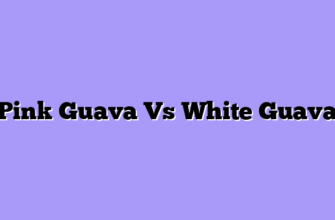Who would have thought that my chance encounter with a Chinese guava (Psidium cattleyanum) at a small Asian market would lead to a complete transformation of my farming operation? Known by various names like Strawberry guava, Cherry guava, or Purple guava, this remarkable fruit has become the crown jewel of my exotic fruit orchard. Let me share my decade-long journey with what I consider to be one of the most underappreciated treasures in the fruit world.
The Discovery: More Than Just Another Guava
I still remember the first time I held a Cattley guava (another common name) in my hand. Unlike its larger cousin, the common guava, this little purple-red beauty was no bigger than a golf ball. The fruit vendor, an elderly Chinese lady, noticed my curiosity and said in broken English, “Wax apple guava – very special, very sweet.” Little did I know that this moment would change the direction of my farming career.

After that first taste, I became obsessed with learning everything I could about this species. I discovered that while it’s called Chinese guava, it actually originated in Brazil and was later introduced to Asia, where it found a special place in Chinese cuisine and culture. Talk about a world traveler!
The scientific community knows it as Psidium cattleyanum, but in various parts of Asia, it goes by names like Purple guava or Asian guava. Whatever you call it, one thing’s for sure – it’s a fruit that demands attention.
The Growing Adventure
Starting my Chinese guava orchard was like solving a complex puzzle. These trees are more particular about their growing conditions than their common guava cousins. Think of them as the sophisticated aristocrats of the guava family – they know what they want and won’t settle for less.
Here’s what I’ve learned about their growing preferences:
- Climate Requirements:
- Thrives in subtropical conditions
- Can tolerate light frost (unlike common guava)
- Prefers humid environments
- Needs protection from strong winds
- Soil Conditions:
- Well-draining, slightly acidic soil (pH 5.5-6.5)
- Rich in organic matter
- Good moisture retention
- Care Requirements:
- Regular but moderate watering
- Light pruning twice yearly
- Minimal fertilization needed
The Unique Characteristics
What makes the Chinese guava truly special is its compact growth habit. Unlike the common guava that can grow into a sprawling tree, these beauties naturally maintain a more manageable size. They’re like the bonsai masters of the fruit world – naturally compact and well-behaved.
The fruit itself is a marvel of nature. While smaller than regular guavas, what they lack in size they make up for in flavor intensity. Each fruit weighs between 25-35 grams and has a smooth, deep purple-red skin when ripe. The flesh is incredibly aromatic – walking through my orchard during harvest season is like strolling through a perfume shop.
One fascinating aspect of Chinese guava is its extended fruiting season. Unlike many fruit trees that have a single harvest period, these trees can produce fruit nearly year-round in the right conditions. It’s like having a fruit factory that never closes!
The trees are also remarkably resilient to pests and diseases. I joke that they must have picked up some ancient Chinese defensive arts along their journey because they seem to naturally repel many common fruit tree problems.
Cultural Impact and Uses
In my years of growing this fruit, I’ve developed a deep appreciation for its versatility. The Chinese have been using it in traditional medicine for centuries, claiming it helps with digestive issues and boosts immunity. While I can’t verify these health benefits, I can tell you that my Chinese customers swear by them.
The culinary applications are endless. I’ve seen these fruits transformed into everything from exotic jams to high-end desserts. One local chef even creates a signature sauce using my Chinese guavas, pairing it with duck in a fusion dish that’s become legendary in our area.
What’s particularly interesting is how different cultures use this fruit. My Japanese customers prefer them slightly underripe for a more tart flavor, while my Chinese customers wait until they’re fully ripe and soft. It’s fascinating how one fruit can bridge so many cultural preferences.
Looking to the Future
As I look at my thriving Chinese guava orchard today, I can’t help but feel optimistic about the future. These trees represent more than just a successful crop – they’re a testament to the rewards of agricultural diversity and cultural exchange. More farmers in our area are starting to recognize the potential of this remarkable fruit.
I’m currently experimenting with new growing techniques to extend our production season even further. The dream is to have fresh Chinese guavas available year-round without relying on greenhouse cultivation. It’s ambitious, but hey, that’s what farming is all about – constantly pushing the boundaries of what’s possible.
The market for exotic fruits continues to grow, and Chinese guava, with its unique flavor profile and versatile uses, is perfectly positioned to become the next big thing in specialty fruit production. I’m proud to be part of this agricultural evolution, one purple pearl at a time.
Remember: Whether you call it Chinese guava, Purple guava, or Cattley guava, this remarkable fruit represents the perfect blend of flavor, functionality, and cultural significance. It’s not just a fruit – it’s a bridge between traditions, a testament to agricultural adaptation, and a promise of exciting possibilities in fruit farming.








